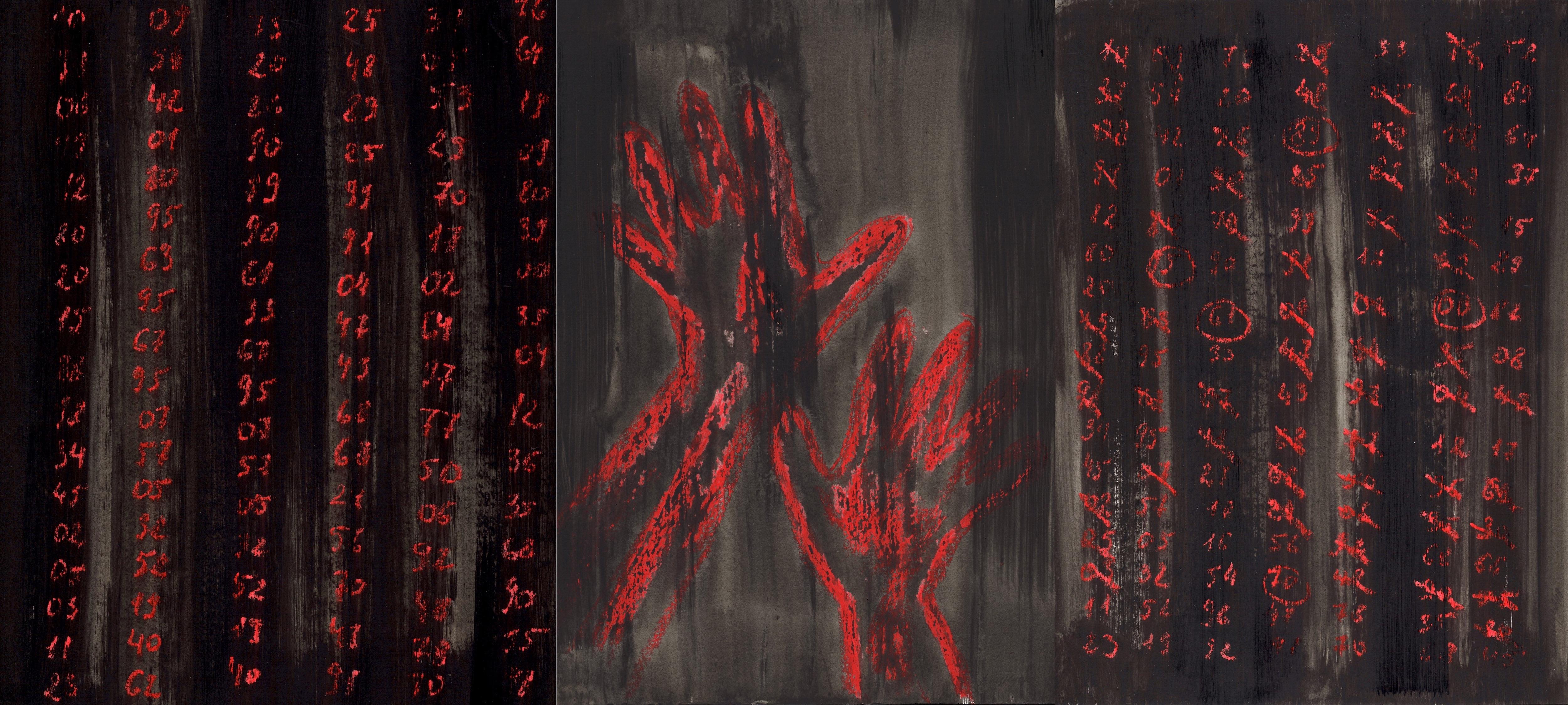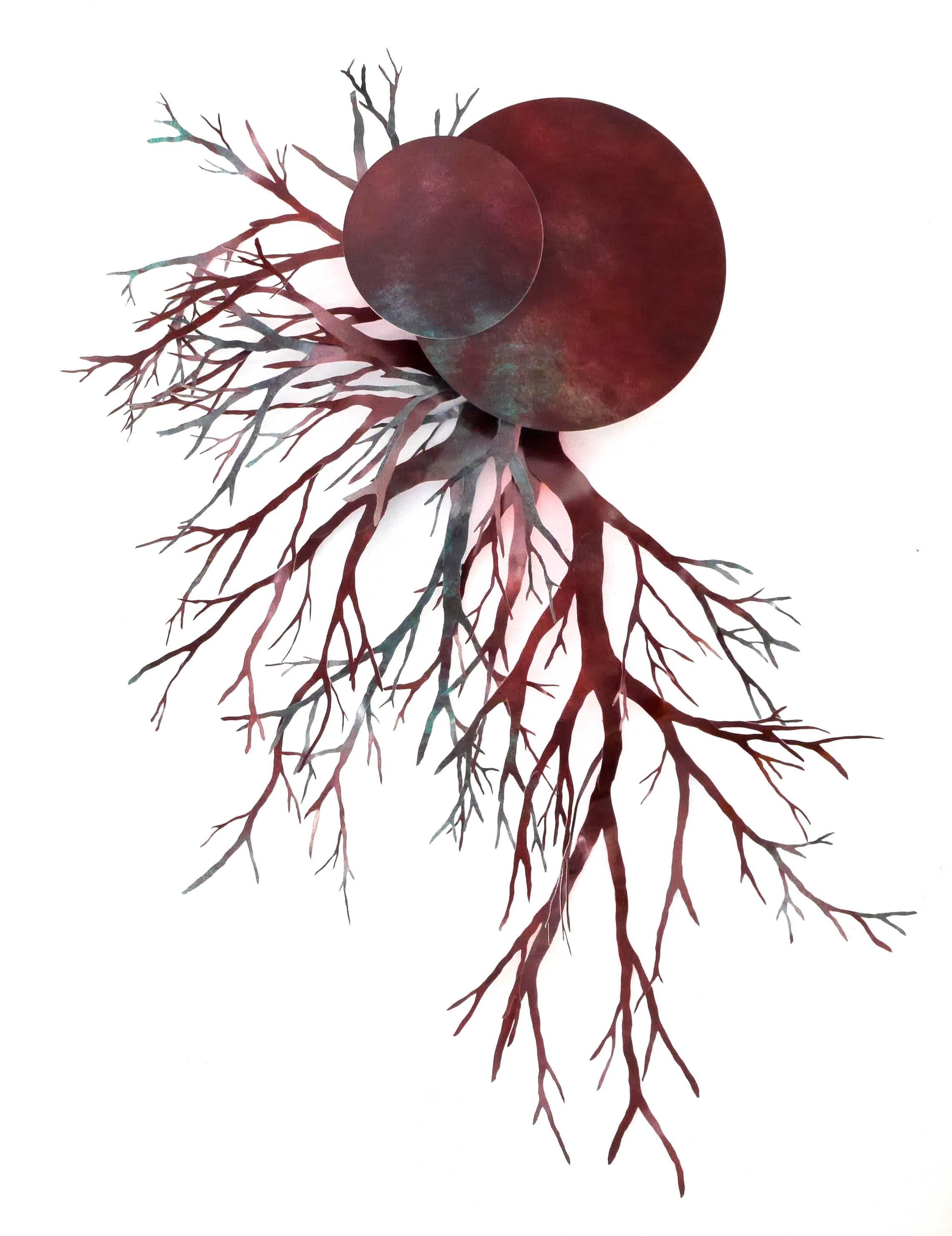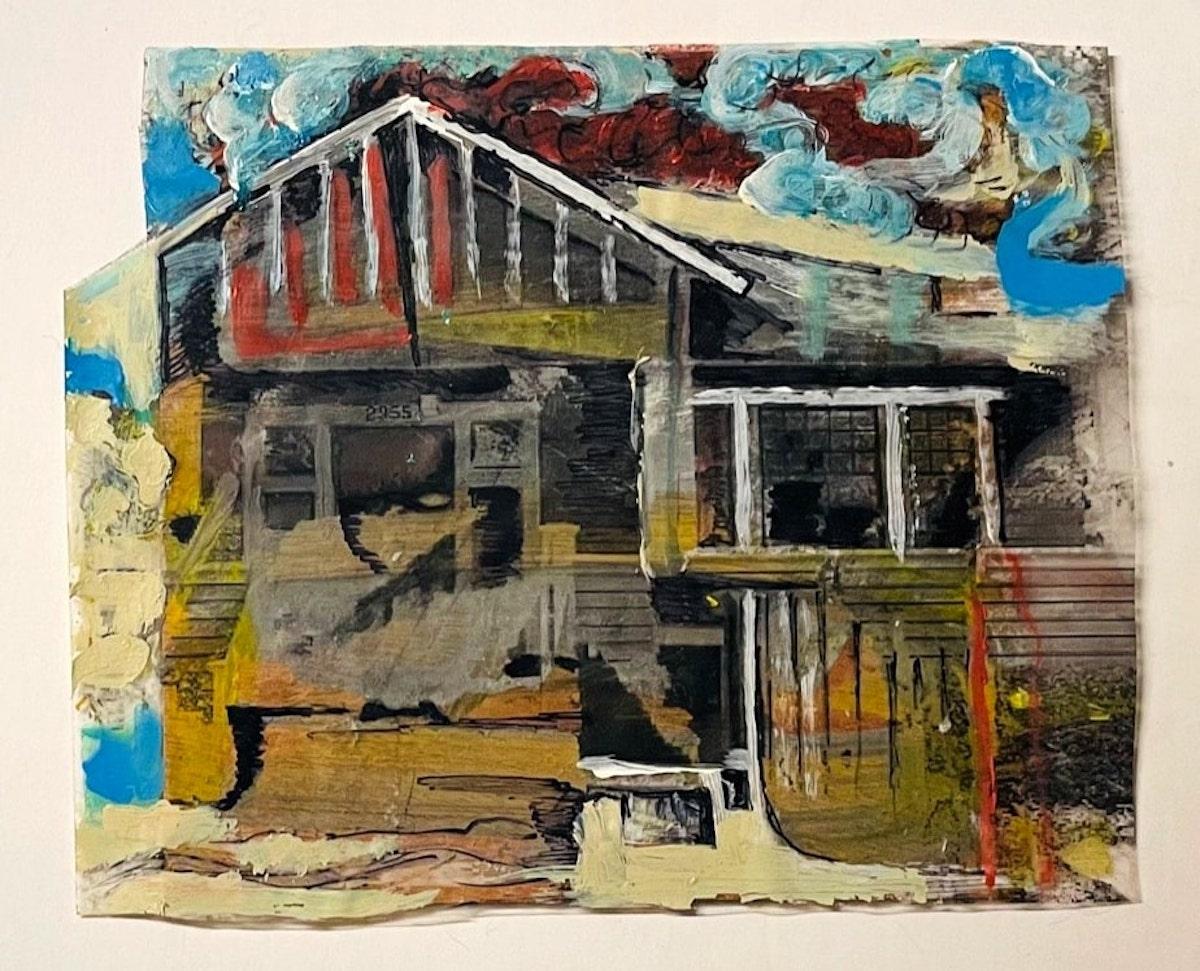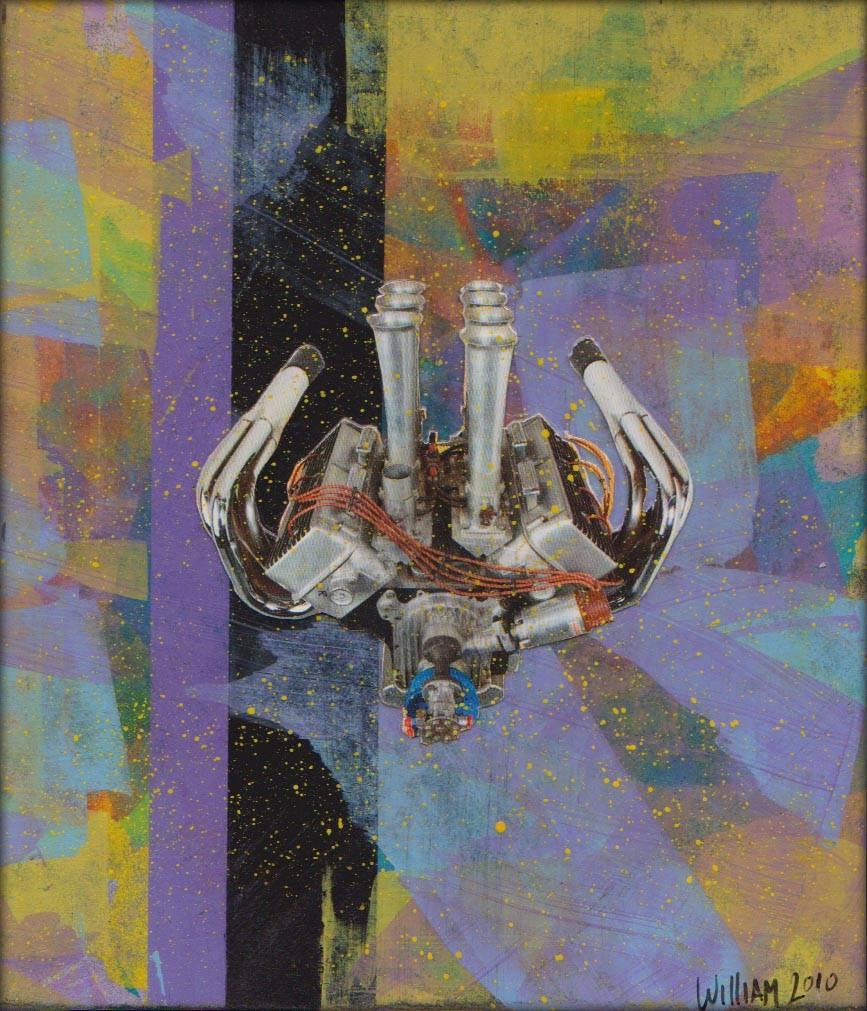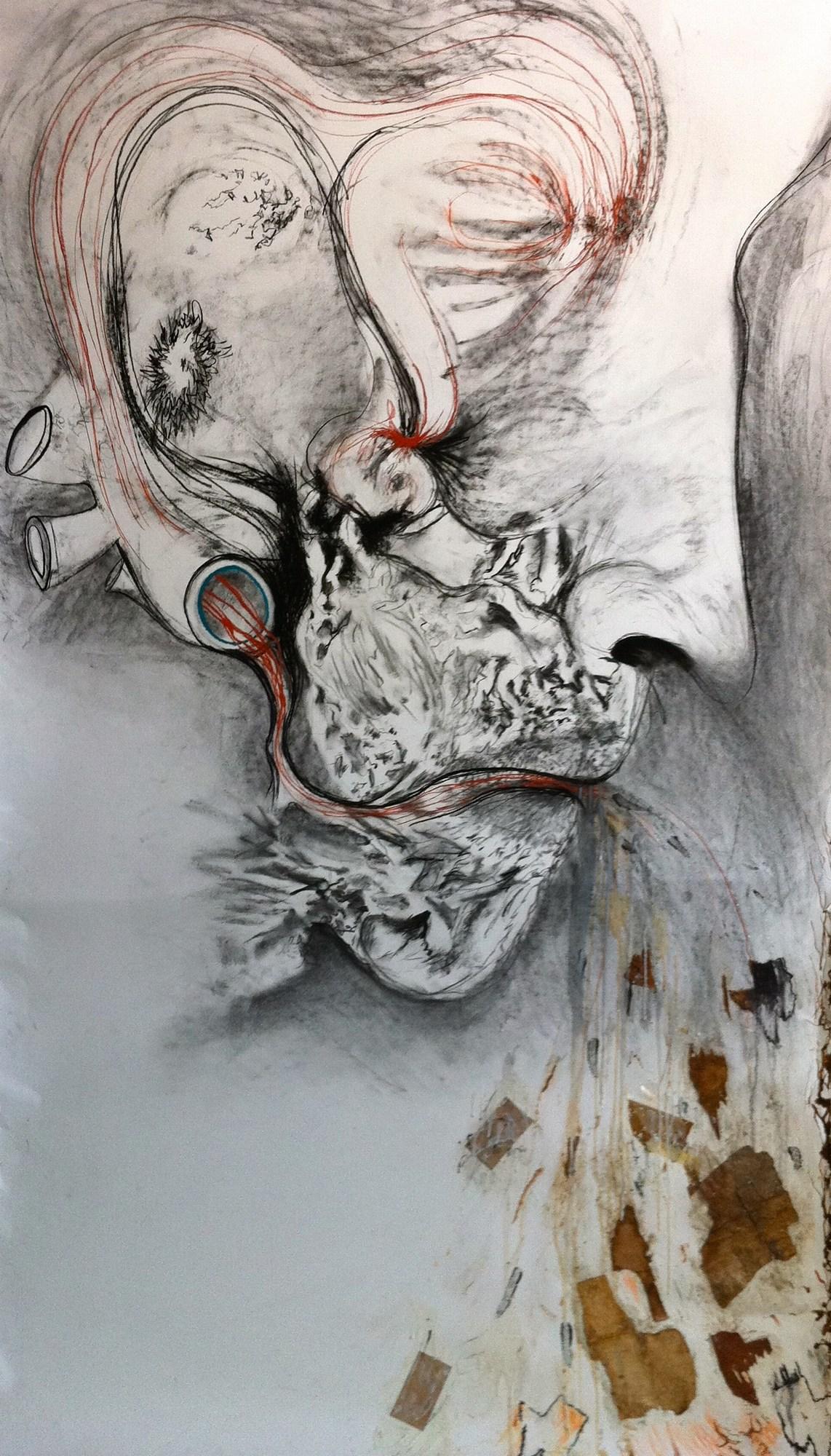Items Similar to `Irwin w/ beacon`, 2021 -`In;Human Nature` painting glacier nasa moon
Want more images or videos?
Request additional images or videos from the seller
1 of 3
Christian Houge`Irwin w/ beacon`, 2021 -`In;Human Nature` painting glacier nasa moon2021
2021
About the Item
Edition of 3.
3 separate pieces make up this installation.
150 cm. x 150 cm. Pigment print mounted on aluminium. Framed in solid oak with museum glass.
, `The need for images that can change us. `
– An account of Christian Houges images.
“For example, one could say. A people is a “group of rational beings, bound together in agreement about what they love.” The kind of “people” they are, would be determined from what they “have loved.” If we then have a group of rational beings (animals excluded) who are “bound together in an agreement about what they have loved”, then it makes sense to call them a “people”, no matter what they may have loved. And for better or worse, what it is that they have found in common, through better or worse they are considered as a people”
– Augustin, De civitate Dei – The City of God.
..............In this context, another series by Christian Houge becomes interesting, because it not only sheds light on the national romanticism and the kind of historical movement it is part of, but also because it provides us with a critical look at how we imagine landscapes, and we are reflected in them, in the historical and social sense. In; In;Human Nature, Houge transforms Svartisen - an ideally typical Norwegian landscape - into a topographical wireframe landscape showing shapes and volumes, but also heights, widths and all conceivable dimensions. In this way, he relates more to the landscape presentation that the surveyor's or cartographers' ambitions sought, which, of course, were to turn the landscape into quantifiable forms. Which in turn can be translated into something that can be divided, mastered, colonized and - in the end - refined into resources and raw materials. This grid is placed as a topographical landscape, namely on the Moon, more specifically NASA's images from the lunar landing in 1969.
This double exposure leads us to the essence of what the human urge for conquest springs from: On the one hand, we will conquer new places, peoples, and natural areas to use them as raw materials for the production of goods, on the other hand, the landscape is used as a mirror of the human urge to to surpass oneself as sovereign in the broader sense. When the American flag was planted on the Moon, it was marked as a conquered territory and thus it could also serve as a mirror for humanity - in this case: the excellence of the Americans. When the contours of Svartisen form the background for the first steps on the moon, two imaginary communities are as a result connected and root the human colonial thought in the form of desire for control which has led us into the disability we and the Nature around us have ended up in. It is as the national romantics and its avatars show us, that Nature itself is not that which is important, but how we can transform it into either a surface we can reflect our uniqueness on or a mass that can be transformed into something we can generate money from.
Houge once again radicalises how we think about our relationship towards ourselves and towards the world around us, but this time it is not only the destruction of Nature or the planet itself that he addresses, but also the background for this development: the aforementioned idealization of the landscape as the scene and its attachment to an imagined community. The radicalization lies in how the nation-building's idealization of landscape is reduced to its basic forms. That man's urge to transform everything in his own reflection or transform everything foreign into something familiar, covers, after all, the vulnerability that both the individual human being, animals and nature itself are most deeply defined by. As long as we do not understand this, we will as a consequence overtake everything and everyone, including our own fragility in the whole, immersed in our own reflection, even if we find nothing there but blindness and fantasies about our own invincibility. For we are no better as people, as Humanity, than those we hold dear and cherish, as Augustine says, for if we think only of money or conquest we will be poor in spirit and lose touch with what we care about. Or to put it another way: if we only care about our own reflection, we will never see the one who reflects - yourself - because the reflection replaces the original. But conversely, even such common objects of love as the care Houge shows the glacier I started this text by describing the potential to create community and directions for community that take into account both who we are, what we love and what is worth gravitating towards.
Sooner or later, this fantasy will burst, that is if it has not already done so, and so it may be too late - the damage has already been done. Not so much on ourselves, perhaps, but on the world we have navigated in. That is why it is so important to create images that make it possible to penetrate this rather silly mirror image that prevents us from viewing reality outside and inside ourselves and how essential it is to show care. This is where Houge's images have their roots in what we love most: life itself. Both our own and the world we live in. If we manage to recognize how far from ourselves and life the colonial fantasies have taken us, we may be able to save the remains.
-Kjetil Røed
‘In;Human Nature’
2016
In this series, Christian Houge is inspired by our endeavour to connect Man to both the Cosmos and the Earth.
Rare NASA photographs of early moon landings from the 60`s and 70`s, survey photographs and explorations of Mans new constitutive horizons have been collected and photographed.
The title, `In;Human Nature` reflects both Man`s urge to explore, as well as the fact that this part of nature is very much outside of our comprehension, reminding us that we venture into a domain where mankind is perhaps fundamentally unwelcome.
Many of the works in `In;Human Nature` holds a suffocating silence juxtaposed with humanity`s own urge for exploration and conquering of the unknown.
The Moon has always been subject to much symbolism in culture and served as a gateway to the Universe in our explorations.
After photographing and categorizing massive glacial landscapes in his native Norway, the artist integrated 3-dimensional geometric topographical landscapes into unknown horizons in the lunar landscape.These are hand drawn with acrylic and pigment making each print unique.
Mans own cellular `composite` is geometrical and thus links us more, universally, to the unknown than what we may think.
The NASA images, at the time made, were documentation of the biggest achievement made by Humankind in modern times, and there is an irony in making new landscapes of our own disappearing nature onto the moonlandscapes. Here lies a commentary of Humankind`s ego that is hard not to take notice to. This creates unique images with symbolism and relevance to one another, including Humankind.
In the artists fascination by the limits of our perception and science’s inevitable failure in the uncertainty of quantum processes, he uses the charge between the known and uncertain to explore the deep-seated human need to create order and find meaning in a bigger picture.
As the Holocene epoch turns to the Anthropocene in the mid-20th century humans fundamentally lose their all too human superstructure. It is this loss of environment that Houge ironizes in his new work.
Like all of his work, the relation and conflict between Nature and culture is explored.
In the book by Carl Jung (1875-1961), `Man and his Symbols`, the psychiatrist reminds us of how our exploration of the unknown Antarctic
in 1911, provided an apt image of the liberation, the breaking out of containment, that characterizes transcendence.
This is still true in contemporary times with space exploration of new stars, planets and galaxies.
The images in `In;Human Nature` symbolize the 20th-century embodiments of the urge toward liberation and release that is called transcendence.The word transcendence comes from the Latin prefix trans-, meaning “beyond,” and the word scandare, meaning “to climb”.
-Lars Elton
- Creator:Christian Houge (1972, Norwegian)
- Creation Year:2021
- Dimensions:Height: 59.06 in (150 cm)Width: 177.17 in (450 cm)Depth: 5.91 in (15 cm)
- Medium:
- Movement & Style:
- Period:
- Condition:
- Gallery Location:Oslo, NO
- Reference Number:1stDibs: LU160028661002
About the Seller
No Reviews Yet
Vetted Seller
These experienced sellers undergo a comprehensive evaluation by our team of in-house experts.
Established in 2000
1stDibs seller since 2021
- ShippingRetrieving quote...Ships From: Oslo, Norway
- Return PolicyA return for this item may be initiated within 3 days of delivery.
More From This SellerView All
- `Untitled 16`-Shadow Within-wolf nature b/w animalBy Christian HougeLocated in Oslo, NO`Shadow Within` Norway/USA 2010-2013 70 cm x 110 cm. (28 in. x 43 in.) Edition 6 + 2 a.p. 100 cm x 150 cm. Edition 3 + 1 a.p. Archival ink cotton paper (archival pigment print)...Category
2010s Conceptual Black and White Photography
MaterialsArchival Pigment
- Mount Hadley, Oslo 2021. -from the series `In;Human Nature`-painting glacierBy Christian HougeLocated in Oslo, NOImages from soloshow a Buer Gallery, oslo. 2021 The need for images that can change us. – An account of Christian Houges images. “For example, one could say. A people is a “group of rational beings, bound together in agreement about what they love.” The kind of “people” they are, would be determined from what they “have loved.” If we then have a group of rational beings (animals excluded) who are “bound together in an agreement about what they have loved”, then it makes sense to call them a “people”, no matter what they may have loved. And for better or worse, what it is that they have found in common, through better or worse they are considered as a people” – Augustin, De civitate Dei – The City of God. A glacier is melting in the Alps. The consequences, if it completely disappears together with the other glaciers, will be catastrophic: The ocean will rise and livelihood will vanish for many. Yes, the very place we inhabit each and everyone of us, nation, the earth we walk on - the home we seek refuge for safety - will in part be completely gone. .....In this context, another series by Christian Houge becomes interesting, because it not only sheds light on the national romanticism...Category
2010s Contemporary Mixed Media
MaterialsAcrylic, Pigment, Archival Pigment
- `Rover and Rock`, Oslo 2021. - `In;Human Nature` painting glacier originalBy Christian HougeLocated in Oslo, NOImages from soloshow a Buer Gallery, oslo. 2021 `In;Human Nature`2016-2021 Unique Piece `The need for images that can change us` – An account of Christ...Category
2010s Contemporary Mixed Media
MaterialsAcrylic, Pigment, Archival Pigment
- `Untitled 36`. Norway.Shadow Within-wolf nature forest animalBy Christian HougeLocated in Oslo, NO`Shadow Within` Norway/USA 2010-2013 70 cm x 110 cm. (28 in. x 43 in.) Edition 6 + 2 a.p. 110 cm. x 150 cm. (47 in. x 59 in.) Edition 3 + 1 a.p. 100 cm x 150 cm. Edition 3 + 1 a....Category
2010s Contemporary Color Photography
MaterialsArchival Pigment
- `Untitled 13`-Shadow Within-nature wolf animal b/wBy Christian HougeLocated in Oslo, NO`Shadow Within` Norway/USA 2010-2013 110 cm. x 150 cm. (47 in. x 59 in.) Edition 3 + 1 a.p. 100 cm x 150 cm. Edition 3 + 1 a.p. Archival ink cotton paper (archival pigment prin...Category
2010s Contemporary Black and White Photography
MaterialsArchival Pigment
- `Untitled 8`, Norway 2012- nature colour wolf animalBy Christian HougeLocated in Oslo, NO`Shadow Within` Norway/USA 2010-2013 70 cm x 110 cm. (28 in. x 43 in.) Edition 6 + 2 a.p. 110 cm. x 150 cm. (47 in. x 59 in.) Edition 3 + 1 a.p. 100 cm x 150 cm. Edition 3 + 1 a....Category
2010s Contemporary Color Photography
MaterialsArchival Pigment
You May Also Like
- DovelikeBy Joanna SalskaLocated in Delray Beach, FLDovelike 2018 Pencil signed and title. Joanna Salska was born in Poland and received her MFA from Warsaw Academy of Fine Art. She is a painter and interd...Category
2010s Conceptual Mixed Media
MaterialsAcrylic, Archival Paper
- Before and After, Science art on paper, Triptych ManuscriptBy Anastasia VasilyevaLocated in Sempach, LUThis triptych "Before and After" consists of three conceptual drawings on paper from the collection "Manuscripts". The size is 40x30cm of each artwork, high-density paper (360g/m2). ...Category
2010s Conceptual Abstract Drawings and Watercolors
MaterialsOil Pastel, Acrylic, Watercolor, Archival Paper
- Mixed Media Planet with Roots: 'Fons et origo #3' (Source & Origin)By Angelica BergaminiLocated in New York, NYFons et origo, which in Latin means Source and Origin, includes 8 wall-sculptures. These circular shapes sprout long roots in delicate hand-cut formations. Some of the roots have tin...Category
2010s Conceptual Abstract Sculptures
MaterialsMetal, Wire
- Dwellings 5By Iliyan IvanovLocated in New York, NYThis series “Dwellings” is comprised of pieces of mixed media on wood panels. The artist uses wood panels 5 x 5 inches each as base that is painted ei...Category
2010s Conceptual Mixed Media
MaterialsWood, Paper, Acrylic, Permanent Marker, Monoprint
- HorsepowerBy William Finlayson Jr.Located in West Palm Beach, FLacrylic painting with paper, mixed media piece is mounted on a black background that is 8 x 10Category
21st Century and Contemporary Conceptual Mixed Media
MaterialsAcrylic, Paper
- On the Way to ClassBy Kory TwaddleLocated in Kansas City, MOArtist : Kory Twaddle Title : On the Way to Class Materials : Charcoal, conté crayon, pastel, oil pastel, graphite, marker, bees wax, birch bark, and mixed media on paper Date : 201...Category
2010s Conceptual Mixed Media
MaterialsPaint, Paper, Conté, Charcoal, India Ink, Acrylic, Tempera, Watercolor, ...

